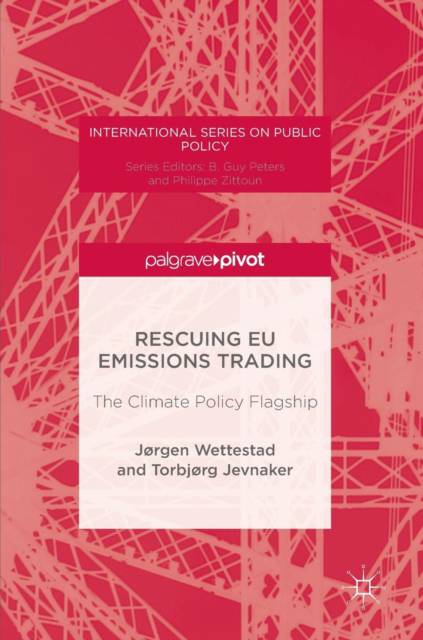
- Afhalen na 1 uur in een winkel met voorraad
- Gratis thuislevering in België vanaf € 30
- Ruim aanbod met 7 miljoen producten
- Afhalen na 1 uur in een winkel met voorraad
- Gratis thuislevering in België vanaf € 30
- Ruim aanbod met 7 miljoen producten
Zoeken
Rescuing EU Emissions Trading
The Climate Policy Flagship
Jørgen Wettestad, Torbjørg Jevnaker
Hardcover | Engels
€ 83,95
+ 167 punten
Omschrijving
This book draws upon a meticulous study of background documents and a string of fresh interviews to tell the fascinating story of how the EU's climate flagship was significantly improved. The EU's emissions trading system (ETS) covers almost half of its greenhouse gas emissions and has been hailed as the cornerstone and flagship of EU climate policy. But in spring 2013 the ETS was in severe crisis, with a huge surplus of allowances and a sagging carbon price. Even a formally simple measure to change the timing of auctioning was initially rejected by the European Parliament. Two years later a much more important 'market thermostat' was adopted (i.e. the Market Stability Reserve) and proposals for a complete ETS overhaul were put on the table. This book examines and explains how it was possible to turn the flagship around so quickly. Crucial changes at EU and national levels are identified, chief among them in Germany and the European Parliament.
Specificaties
Betrokkenen
- Auteur(s):
- Uitgeverij:
Inhoud
- Aantal bladzijden:
- 119
- Taal:
- Engels
Eigenschappen
- Productcode (EAN):
- 9781137566737
- Verschijningsdatum:
- 13/12/2015
- Uitvoering:
- Hardcover
- Formaat:
- Genaaid
- Afmetingen:
- 148 mm x 210 mm
- Gewicht:
- 312 g

Alleen bij Standaard Boekhandel
+ 167 punten op je klantenkaart van Standaard Boekhandel
Beoordelingen
We publiceren alleen reviews die voldoen aan de voorwaarden voor reviews. Bekijk onze voorwaarden voor reviews.








